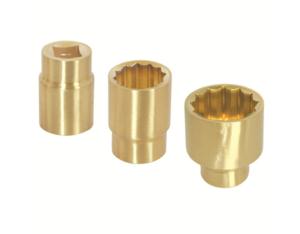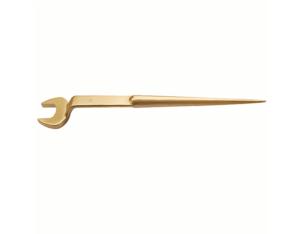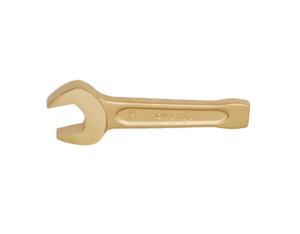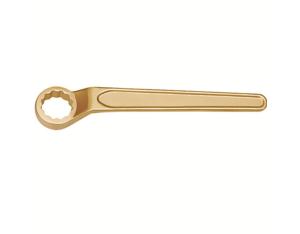Non sparking explosion proof combination wrenches TKNo.135
- Product Details
- Company Profile
Name: non sparking combination wrench Material: Be-Cu,Al-Cu,die forged products Size:6,7,8,9,10,11,12,13,14,15,16,17,18,19,20,21,22,23,24,25,26, 27,30,32,34,35,36,38,41,46,50,55,60,65,70(mm)
Name: non sparking combination wrench
Material: Be-Cu,Al-Cu,die forged products
Size:6,7,8,9,10,11,12,13,14,15,16,17,18,19,20,21,22,23,24,25,26, 27,30,32,34,35,36,38,41,46,50,55,60,65,70(mm)
What is the most important thing to know about "non-sparking" tools?
Non-sparking tools also generate sparks sometimes referred to as “cold sparks”. These cold sparks have a low heat level and do not ignite carbon disulfide, which has the lowest ignition point of any substance known to man. Therefore while “non-sparking” tools may lower the risk of a spark, they do not eliminate the possibility of sparks. The name "non-sparking" is misleading because these tools are capable of producing a spark: the term "reduced-sparking tools" better describes these tools.
Non-metals like wood, leather, and plastic are suitable for some tools like shovels, scrapers or scoops and do not pose a friction spark hazard.
Non-sparking tools provide protection against fires and explosions in environments where there is a concern about sparks igniting flammable solvents, vapors, liquids, dusts or residues. There are many standards and recommendations that have been published by OSHA (Occupational Health and Safety Administration) and NFPA (National Fire Protection Association) that advise the use of non-sparking tools in hazardous environments.
NOTE: It is important to assess each situation carefully and use the appropriate tools for the hazards that are present. In some cases, “non-sparking” tools may still be able to produce a spark. Contact the tool manufacturer, and the producer of the flammable material (for example) for recommendations and more information.
| How to Choose the Correct Alloy for Your Application | ||
| | Aluminum-Bronze (AlBr) Alloy | Copper-Beryllium (CuBe2) Alloy |
| Zone Compatibility | Fulfill demand in ATEX Directive 94/9/EC for work in Zones 1, 2, 21 and 22 | Fulfill demand in ATEX Directive 94/9/EC for work in Zones 0, 1, 2, 20, 21 and 22 |
| Hardness | 27 HRC | 38 HRC |
| Durability | Not as durable as CuBe. | Very durable due to high hardness and tensile strength. |
| Magnetic Properties | Low magnetism due to minimal ferrous components. Appropriate for non-critical non-magnetic applications. | Non-ferrous components; safer for applications demanding non-magnetic properties. |
| Composition | Al: 10.3% | Be: 1.9% |










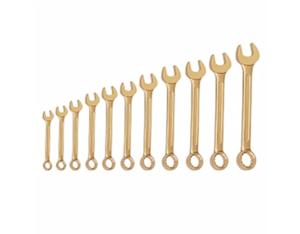
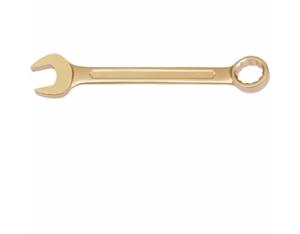

 Free Member
Free Member 0
0 Chinese
Supplier
Chinese
Supplier